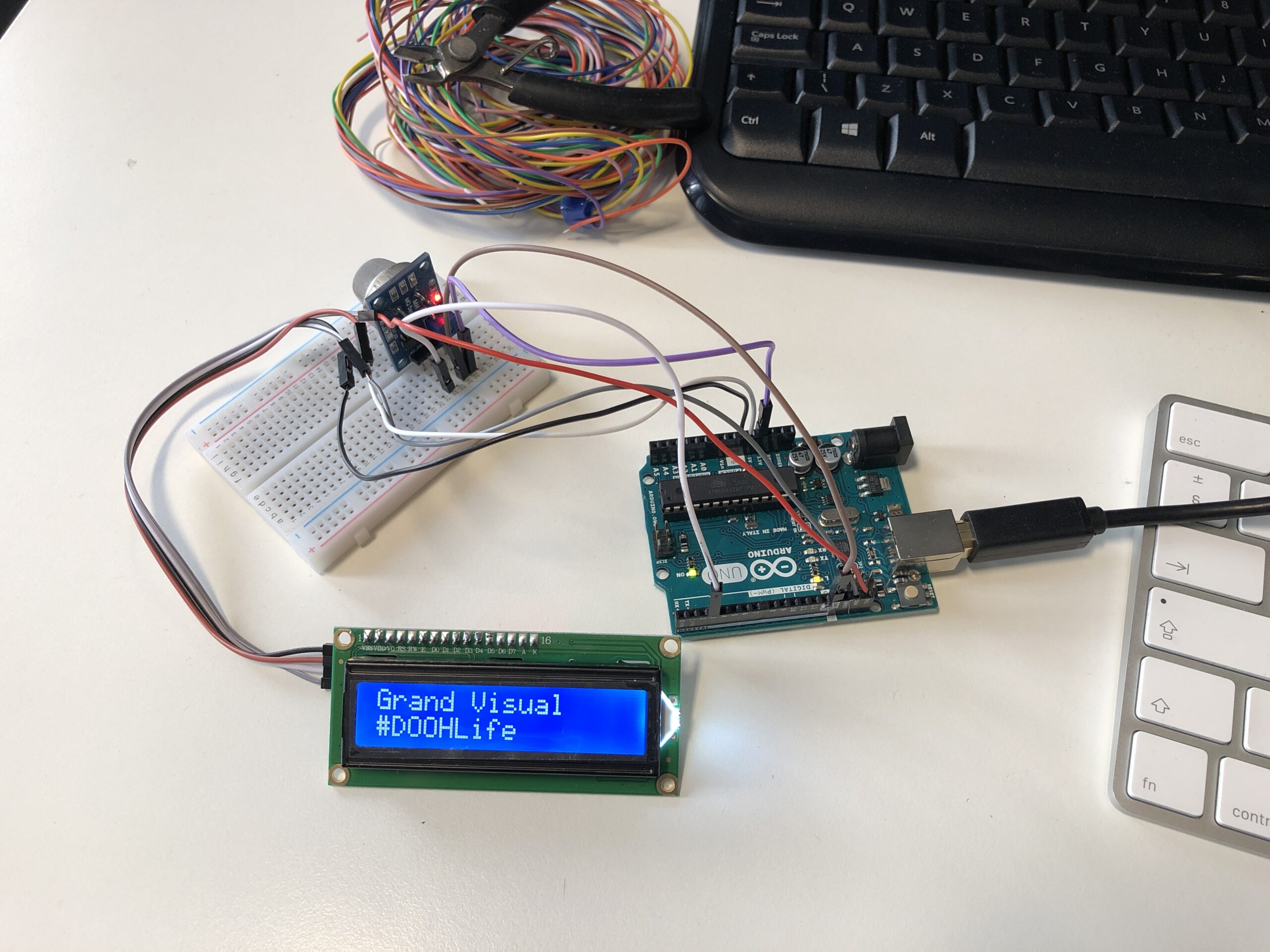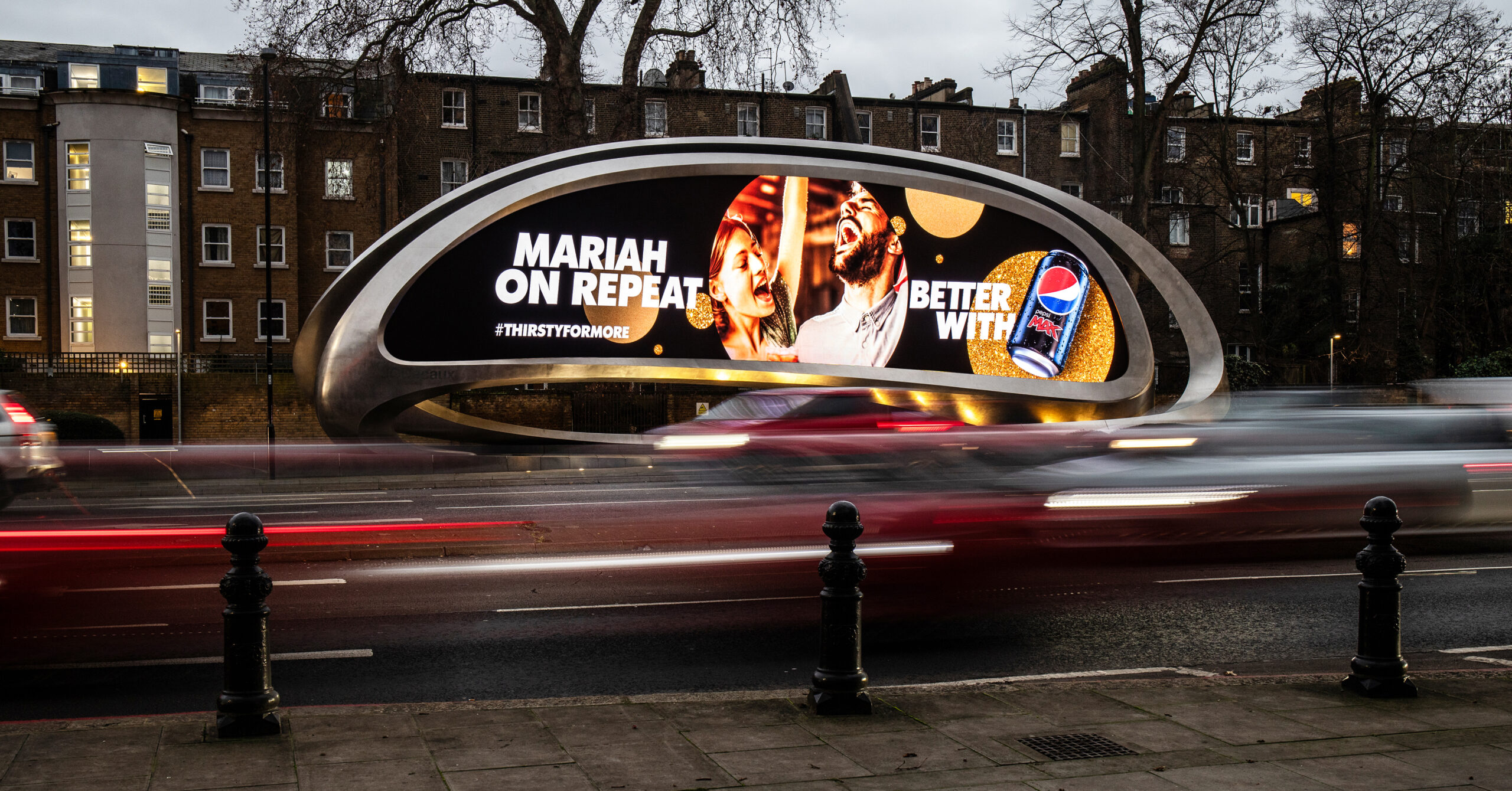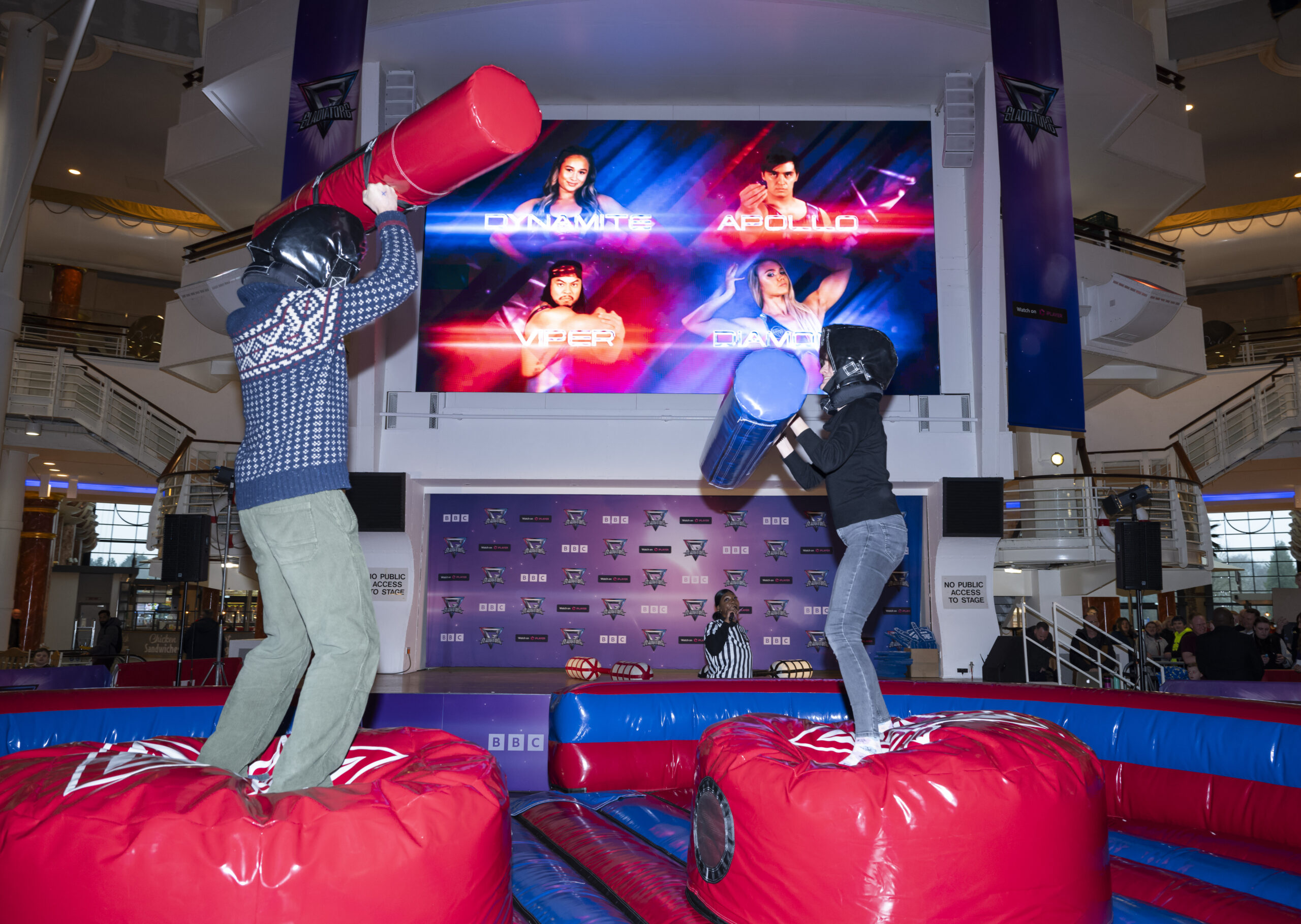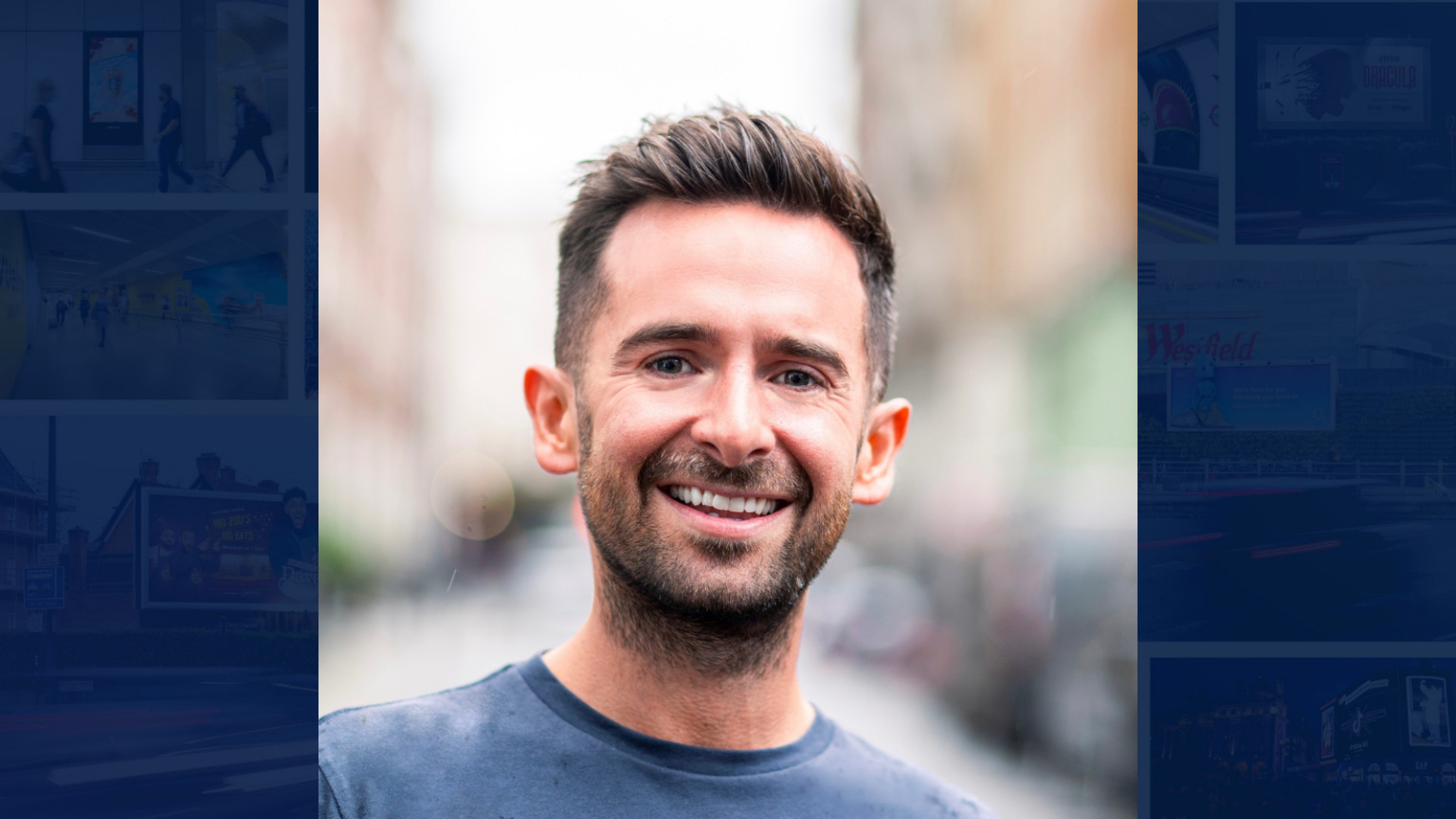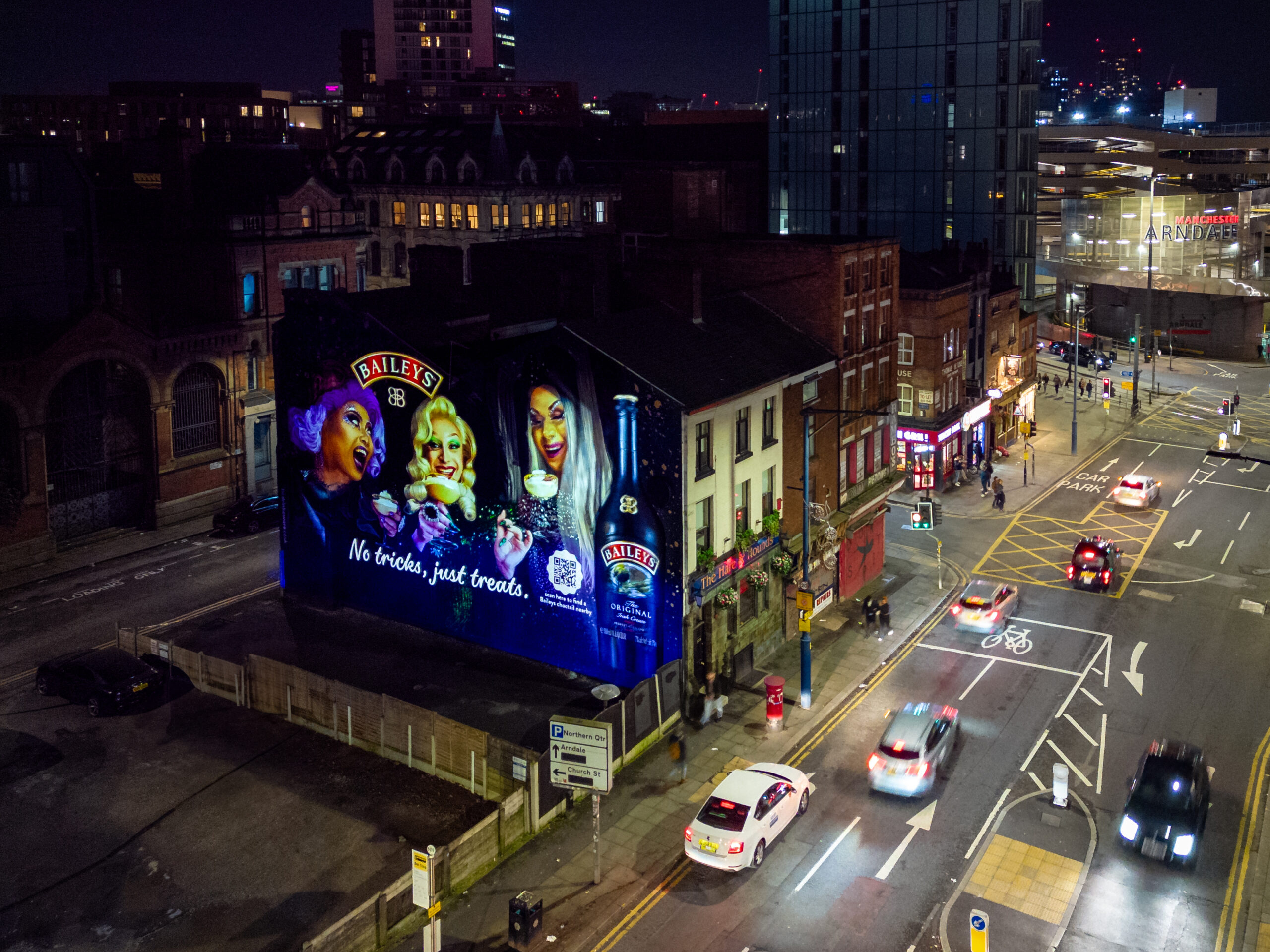Hyper-local data for DOOH
When considering dynamic DOOH campaigns that use data, the mind automatically jumps to weather data such as temperature, precipitation and wind… however, there are a wealth of other data types available, from pollen counts to traffic jams. What we wanted to explore was the possibility of collecting hyper-localised air quality data, that could be used to update each piece of DOOH creative.
There are a plethora of different sensors available on the market that can detect gas levels. The sensor that we settled on was the MQ135 (catchy, right?) which can detect gases such as NH3, NOx, alcohol, Benzene, smoke, and CO2. Getting the readings of these substances in the air would give us a good indication of the current air quality.
By connecting the sensor to an Arduino and an LED strip, we were able to get a visual representation of the readings. Luckily, it seemed that the quality of air in our office was good, so we introduced some other pollutants to test.
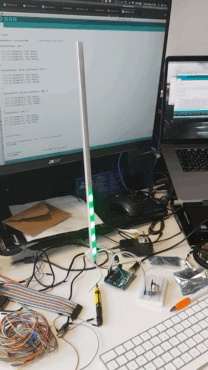
The sensor we had displayed its readings on the screen in ppm (parts per million). The higher the number the more pollutants in the air.
This was the scale used to categorise the ppm ranges.

With the demo working successfully the next step was to take it outside. So to make the kit portable, we set ourselves up with a 3D printed box to house the sensor along with a USB battery.
Then we headed out to get some measurements.

Are you surprised by the readings? All 3 locations fell well within the “good” range, we definitely expected much higher readings in Piccadilly Circus compared to St James’s Park, but it was reassuring to see there was a difference.
For this example, we used an air quality sensor but there are sensors that can provide data local to a particular installation such as temperature, lightning strikes, rain detection and sound decibel levels.
We’re no strangers to dynamic campaigns that rely on specific data triggers, take for example this campaign for Elizabeth Arden which used location-specific pollution readings. Imagine how much more effective this could have been with hyper-localised, real-time readings. It’s still in the early stages, but we’re keen to keep looking into new and more creative data sources to power DOOH.
